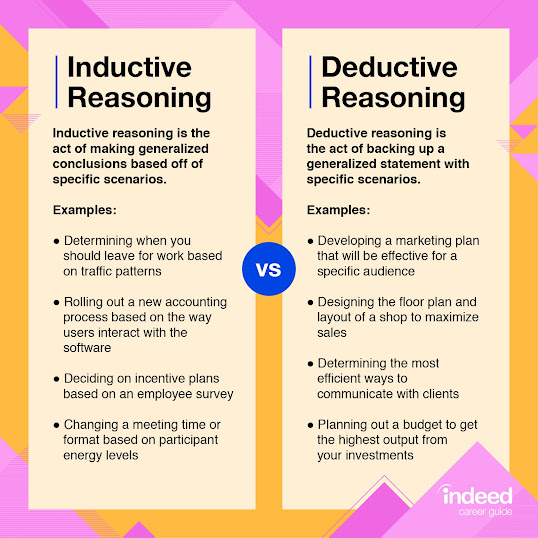SILENCE IS ONE OF THE HARDEST
ARGUMENTS TO REFUTE
What are arguments?
An
argument is a series of statements, called the premises or premises (both
spellings are acceptable), and intended to determine the degree of truth of
another statement, the conclusion.
An
argument is a rationale in which the reason presents evidence in support of a claim
made in the conclusion. An explanation
is a rationale in which the reason presents a cause of some fact represented by
the conclusion. Its purpose is to help us understand how or why that fact
occurs.
uses of arguments
Making and assessing arguments can help us
get closer to understanding the truth. At the very least, the process helps
make us aware of our reasons for believing what we believe, and it enables us
to use reason when we discuss our beliefs with other people.
- Inquiry
- to form opinions
- to question opinions
- to reason our way through conflicts or contradictions
- Conviction
- Arguing to inquire centers on asking questions: we want to expose and examine what we think.
- Arguing to convince requires us to make a case, to get others to agree with what we think. While inquiry is a cooperative use of argument, convincing is competitive. We put our case against the case of others in an effort to win the assent of readers.
- Persuasion
- In general, the more academic the audience or the more purely intellectual the issue, the more likely that the writing task involves an argument to convince rather than to persuade. In most philosophy or science assignments, for example, the writer would usually focus on conviction rather than persuasion, confining the argument primarily to thesis, reasons, and evidence. But when you are working with public issues, with matters of policy or questions of right and wrong, persuasion’s fuller range of appeal is usually appropriate.
- Persuasion begins with difference and, when it works, ends with identity. We expect that before reading our argument, readers will differ from us in beliefs, attitudes, and/or desires. A successful persuasive argument brings readers and writer together, creating a sense of connection between parties.
- Negotiation
- Each side must listen closely to understand the other side’s case and the emotional commitments and values that support that case. The aim of negotiation is to build consensus, usually by making and asking for concessions. Dialogue plays a key role, bringing us full circle back to argument as inquiry. Negotiation often depends on collaborative problem-solving.
The uses of argument by Stephen e. toulmin
Types of Arguments
There are three basic structures or types of argument you
are likely to encounter in college: the Toulmin argument, the Rogerian
argument, and the Classical or Aristotelian argument. Although the Toulmin
method was originally developed to analyze arguments, some professors will ask
you to model its components. Each of these serves a different purpose, and
deciding which type to use depends upon the rhetorical situation: In other
words, you have to think about what is going to work best for your audience
given your topic and the situation in which you are writing.
There are several kinds of arguments in logic, the
best-known of which are "deductive" and "inductive." An
argument has one or more premises but only one conclusion.
Deductive arguments and Inductive arguments
If the argumenter believes that the truth of the premises definitely establishes the truth of the conclusion, then the argument is deductive. If the arguer believes that the truth of the premises provides only good reasons to believe the conclusion is probably true, then the argument is inductive.
Inductive argument is the act of making generalizeed conclution based off of specific scenarios.Deductive argument is the act of backing up a generalized statement with specific scenarios.
Justification
Justification is something that proves, explains or
supports.
An example of justification is an employer bringing evidence
to support why they fired an employee. A reason, explanation, or excuse which
provides convincing, morally acceptable support for behavior or for a belief or
occurrence.
What are Arguments Used For? Justification
Explanation
Philosophy, like several different studies, targets by and
large at understanding.
An argument is a rationale in which the reason presents
evidence in support of a claim made in the conclusion. ... An explanation is a
rationale in which the reason presents a cause of some fact represented by the
conclusion. Its purpose is to help us understand how or why that fact occurs.
Explanation, in philosophy, set of statements that makes intelligible the existence or occurrence of an object, event, or state of affairs.
The langauge of arguments
Argument helps us learn to clarify our thoughts and
articulate them honestly and accurately and to consider the ideas of others in
a respectful and critical manner. The purpose of argument is to change people's
points of view or to persuade people to a particular action or behavior.
Language, a system of conventional spoken, manual (signed), or written symbols by means of which human beings, as members of a social group and participants in its culture, express themselves.
Dinesh Shiwantha Wanigathunga
dineshshiwantha@gmail.com










No comments:
Post a Comment